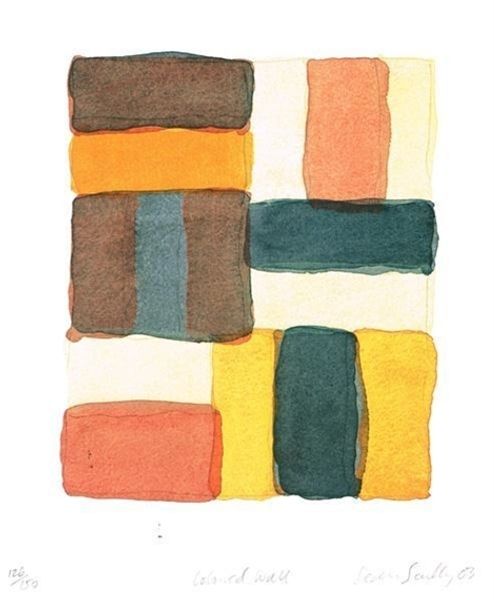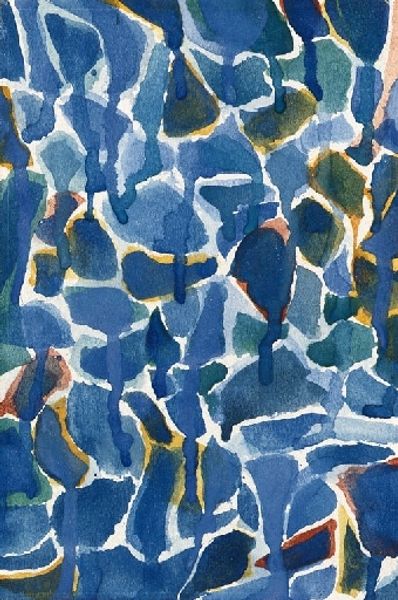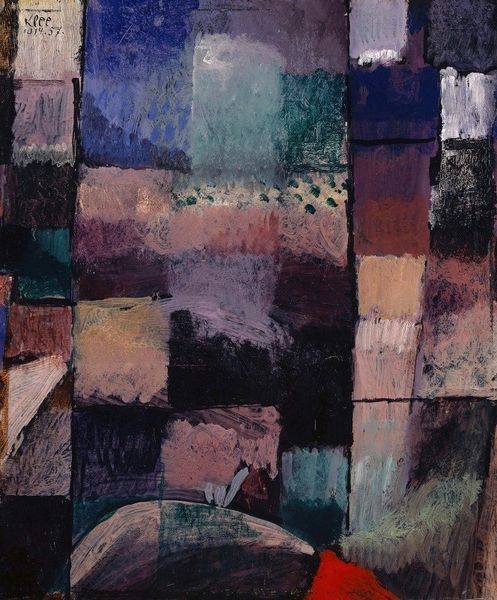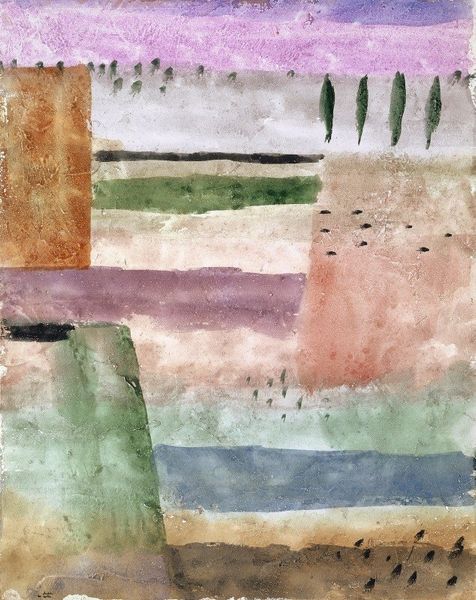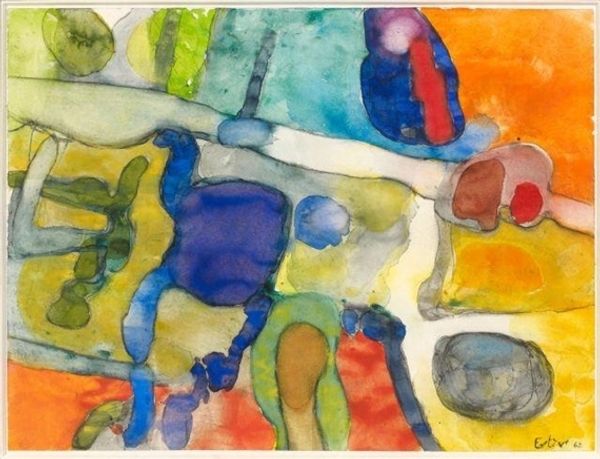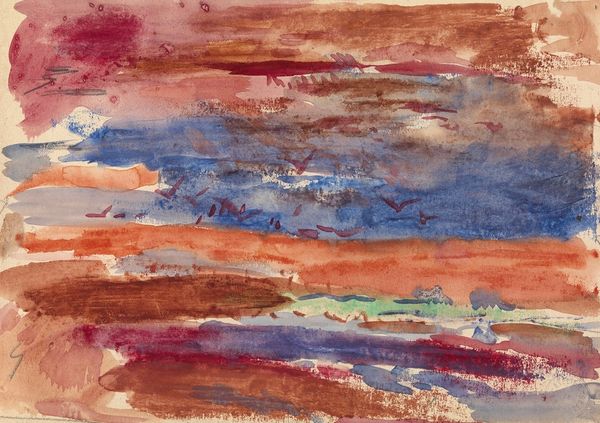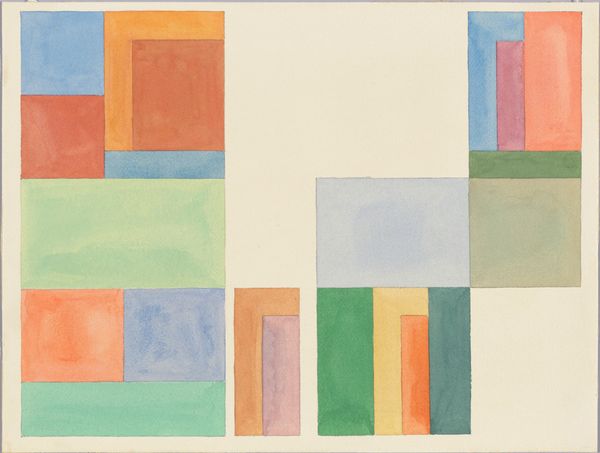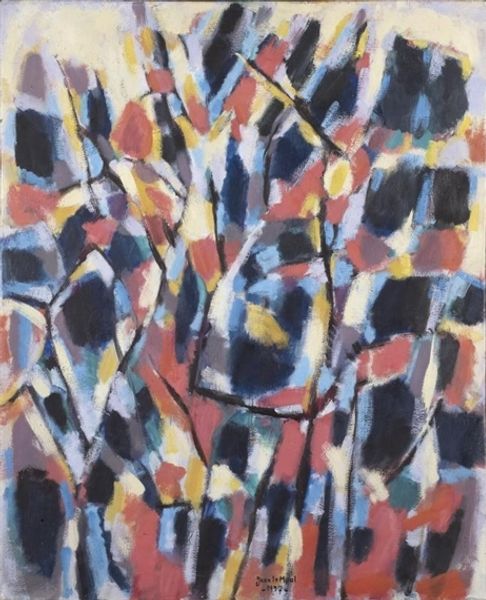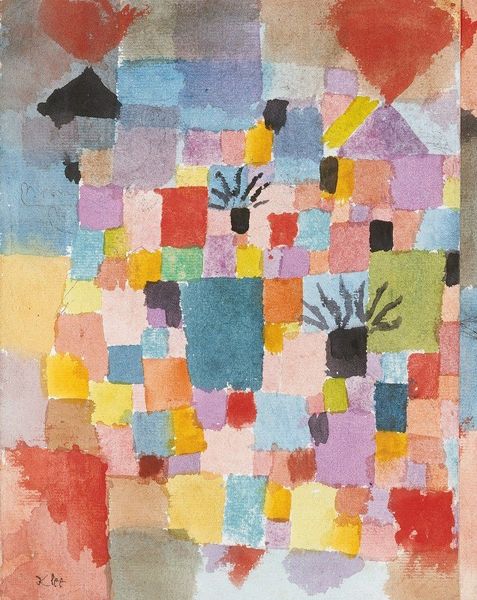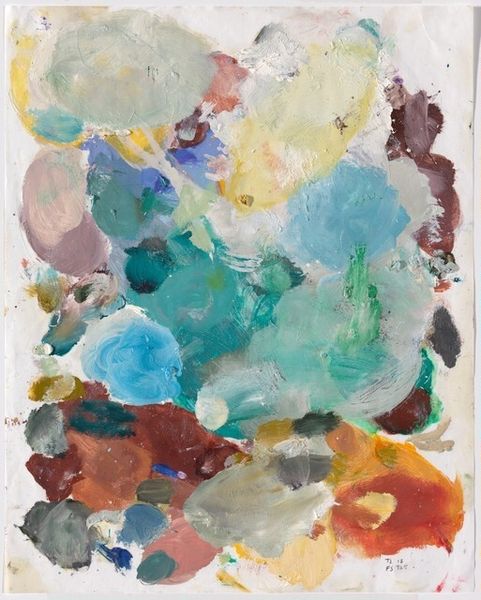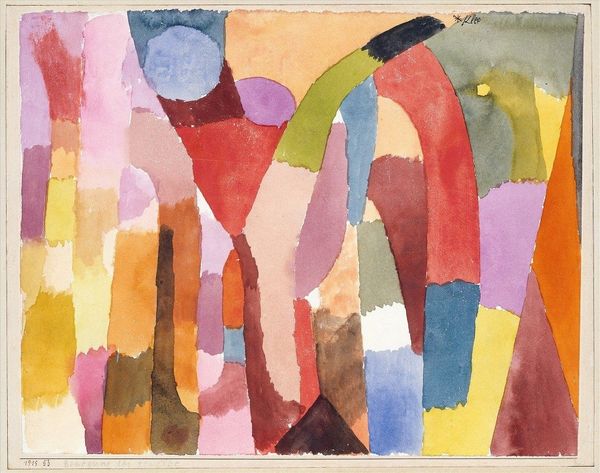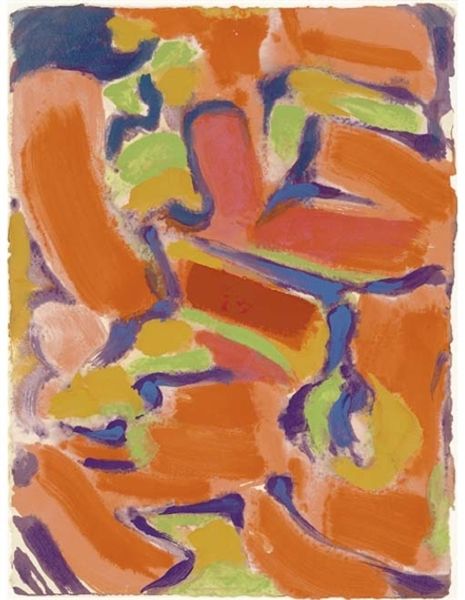
watercolor
#
water colours
#
abstract
#
oil painting
#
watercolor
#
expressionism
#
geometric-abstraction
#
watercolor
Copyright: Public Domain: Artvee
Curator: Here we have Alexej von Jawlensky's "Blumenstillleben," created circa 1922-1925, employing watercolors. Editor: It strikes me as a somewhat deconstructed floral arrangement, quite different from the traditional still lifes. There’s almost a mosaic feel to the piece, with vibrant blocks of color separated by bare areas of paper. Curator: Precisely. Von Jawlensky's artistic journey, heavily influenced by Expressionism, explores themes of spirituality and abstraction. We must consider his evolving perspective on materials during that time – why watercolor, why these particular hues? The availability and cost of materials impacted artistic choices significantly. Editor: I see those influences. The bold colors hint at emotional intensity, a common trait of expressionism, but the abstracted forms complicate the narrative. It is a very interesting choice to consider something as domestic and safe as a still life subject matter, then breaking down the conventions of genre expectations through material and application. What might this artwork be signaling, regarding access, and its politics? Curator: It certainly disrupts expectations, challenging traditional distinctions between "high" art and craft. I mean, the repeated use of watercolor creates a feeling of meditative labor and even the quality of paper affects its material message. How might the socioeconomic background of Jawlensky influence his production and artistic philosophy during a particular period? Editor: Indeed. Perhaps a reflection of post-war scarcity and a move towards democratization of artistic materials? Or it's the choice to move away from oil paint, something traditionally perceived as masculine and valued by wealthy patronage. This seems to me more of an intersectional choice, of material, medium, gender and power, than any overt subject in painting. Curator: A valid interpretation. We mustn't underestimate the role of artists themselves as laborers, dependent on material resources. This piece speaks not only about flowers, but also quietly about its own making, a consequence of its time, and also about the labor required for its creation. Editor: Agreed, thinking about labor shifts my perspective. I started seeing flowers in the context of something beautiful to then being reflective of class, access and availability. It allows me to contemplate on wider cultural systems that are always in constant intersection and that are often hidden in an object. Curator: Analyzing Jawlensky through a material lens helps unveil layers often unseen. Editor: It’s enriching how analyzing through a feminist lens offers insights that expand and deepen our understanding.
Comments
No comments
Be the first to comment and join the conversation on the ultimate creative platform.


